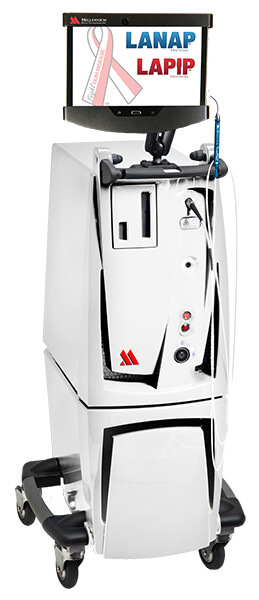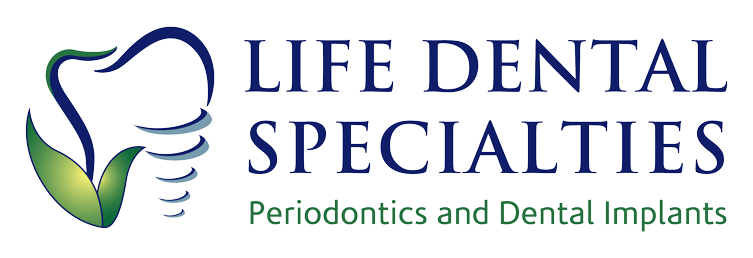LANAP® Laser Periodontal Surgery
The LANAP protocol is a laser-based treatment for gum disease. There is no cutting and suturing with the LANAP protocol. Patients typically report less pain and discomfort during and after the procedure, compared to traditional periodontal surgery. This patient friendly procedure helps you get healthy again comfortably, without fear. Generally, the LANAP protocol is less invasive than traditional surgery and helps maintain a beautiful smile line.
The LANAP protocol is a patented periodontal treatment, cleared by the FDA in 2004. The procedure can only be done with the PerioLase® MVP-7; this laser operates at a specific wavelength that attacks the bacteria that contributes to gum disease while leaving healthy tissue intact. Post-surgical recession and tooth sensitivity, which can be significant following traditional gum surgery, are also greatly reduced.
Patient Benefits:
- Faster Healing– LANAP® is minimally invasive and allows the body to recover and heal more quickly.
- Less Discomfort– Patients report less discomfort during and after surgery.
- Minimal Recovery Time– Most patients can immediately return to their daily routine.
- Little to No Gum Recession– Because the procedure doesn’t require cutting the gums, there is less risk of recession and your beautiful smile is maintained.
- Reduction in Gum Inflammation and Bleeding– The PerioLase® MVP-7™ targets inflammatory bacteria without injuring healthy tissue.
- Saves Teeth– Patients can keep their natural teeth sometimes even when the teeth have been deemed ‘hopeless’ with traditional treatments. Keeping your natural teeth has been linked to a longer lifespan!
- Safe for patients with Health Concerns –LANAP® protocol is safe for patients with health concerns such as diabetes, HIV, hemophilia, or those taking medications such as Plavix or aspirin.

Frequently Asked Questions:
How exactly does laser dentistry work?
Lasers deliver energy at different wavelengths into both the gums and teeth. They can be used to target tooth decay, tooth enamel, or gum tissue. The laser can remove small layers of tooth or gum material, and still preserve the integrity of underlying tissue.
Why do lasers cause less discomfort?
Because there is no drill in direct contact with tissue, you’ll feel less of an uncomfortable vibration when dental lasers are being employed. Plus, lasers are minimally invasive, which makes them an excellent choice for patients who experience dental anxiety.
Is it safe to use laser dentistry?
Laser dentistry is safe, advanced, and comfortable. The lasers are approved by the FDA for use in a variety of different procedures to ensure that patients stay safe and comfortable. Lasers have been found to be just as safe or safer than other dental tools used by a skilled, trained dentist.
What are the most common uses of dental lasers?
Dental lasers are used for tissue removal such as in the case of treatment for:
- Gum disease: Lasers are used to remove unhealthy gum tissue, remove bacteria during root canals, and in order to destroy bacteria on the gums and in teeth roots.
- Cosmetic gum reshaping: Lasers can remove gum tissue, which will then allow cosmetic reshaping of gums, or reshaping of the gums after treatment for gum disease.
- Removal of tooth decay: Laser drills are extremely effective for removing tooth decay. They’re also used to prepare tooth enamel to receive fillings.
- Biopsies and lesion removal: Laser dentistry excellent for use in biopsies and the removal of lesions. Tissue remains intact and in good condition, which means no pain or bleeding when removal takes place.
Is numbing necessary for laser dentistry procedures?
Usually it is not necessary. After all, laser dentistry doesn’t involve physical contact with the mouth tissue, so many patients feel no discomfort. And, because these high-intensity lasers have a cauterizing effect, there is typically hardly any bleeding after laser dentistry procedures.

